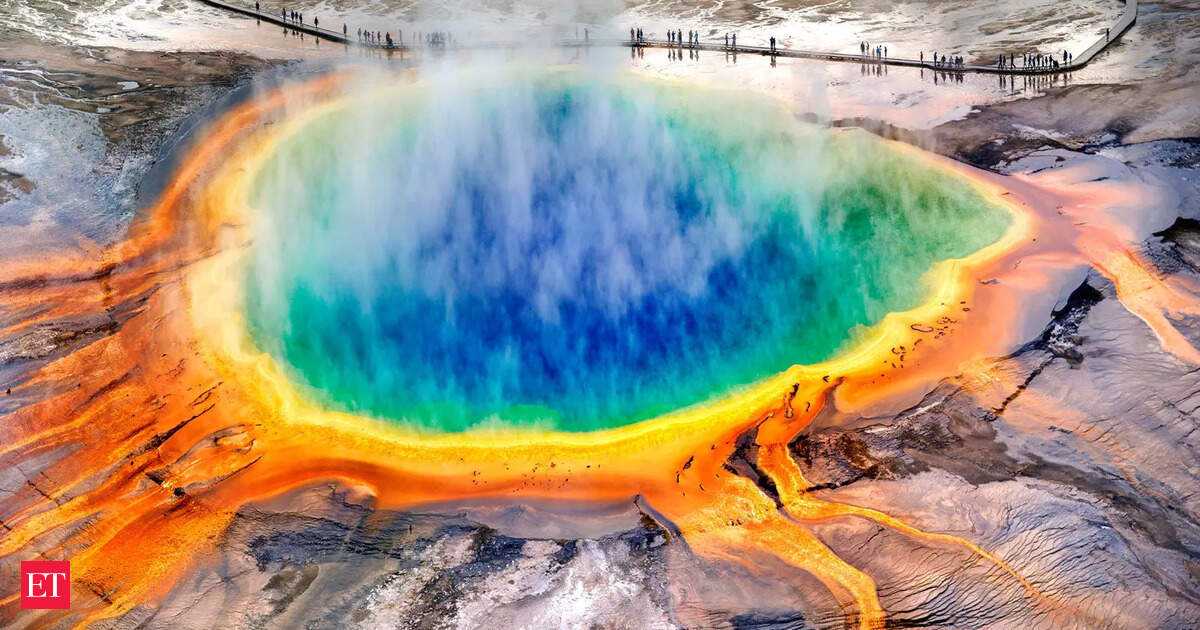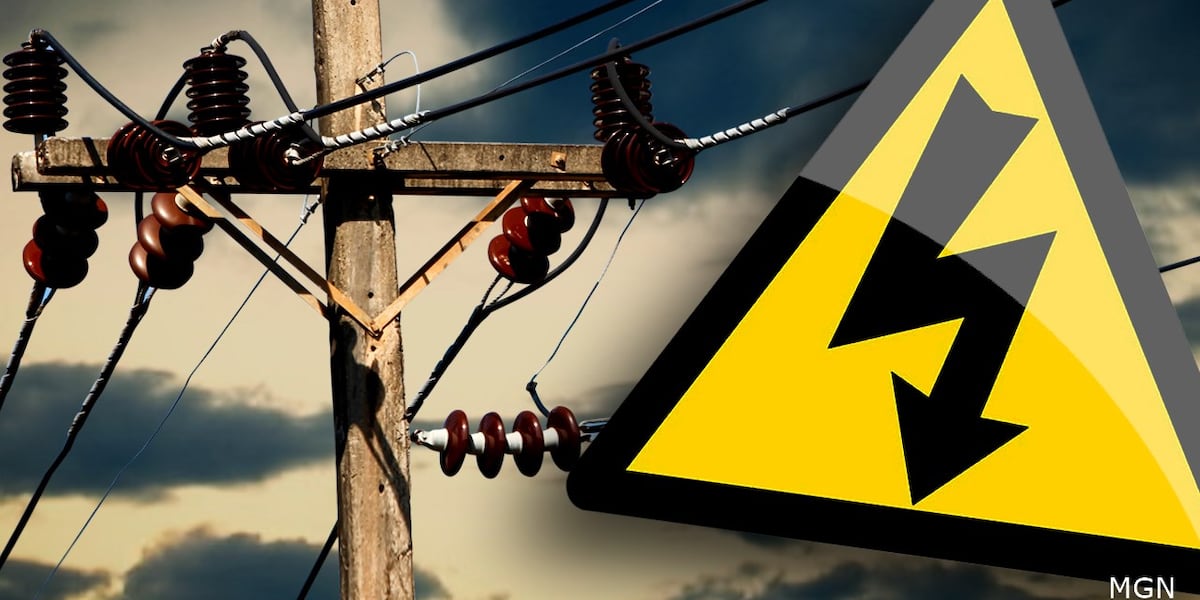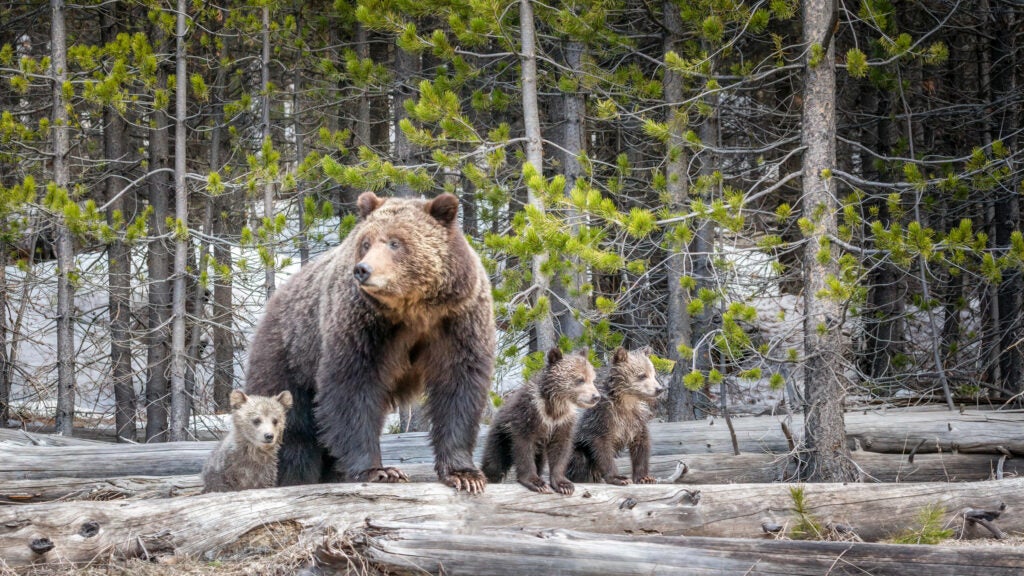Yellowstone Supervolcano: A Scientific Look At The Eruption Threat

Welcome to your ultimate source for breaking news, trending updates, and in-depth stories from around the world. Whether it's politics, technology, entertainment, sports, or lifestyle, we bring you real-time updates that keep you informed and ahead of the curve.
Our team works tirelessly to ensure you never miss a moment. From the latest developments in global events to the most talked-about topics on social media, our news platform is designed to deliver accurate and timely information, all in one place.
Stay in the know and join thousands of readers who trust us for reliable, up-to-date content. Explore our expertly curated articles and dive deeper into the stories that matter to you. Visit Best Website now and be part of the conversation. Don't miss out on the headlines that shape our world!
Table of Contents
Yellowstone Supervolcano: A Scientific Look at the Eruption Threat
The Yellowstone Caldera, a supervolcano nestled in the heart of Yellowstone National Park, captivates and concerns in equal measure. Its potential for a catastrophic eruption is a topic frequently discussed, sparking both fascination and fear. But what does the science actually say about the likelihood of such an event? Let's delve into the facts, separating sensationalism from scientific reality.
Understanding the Yellowstone Supervolcano
Yellowstone is renowned for its geysers, hot springs, and vibrant geothermal features. These are all manifestations of the immense magma chamber beneath the surface – a vast reservoir of molten rock responsible for the park's unique landscape. The "supervolcano" designation refers to its capacity for producing eruptions of Volcanic Explosivity Index (VEI) 8 – the largest possible category, capable of causing global climatic changes.
The caldera itself, a massive depression formed by past super-eruptions, is roughly 34 by 45 miles in size. Three cataclysmic eruptions have occurred in Yellowstone's history: 2.1 million years ago, 1.3 million years ago, and 640,000 years ago. These eruptions ejected unimaginable amounts of ash and debris, drastically altering the landscape and impacting global climate.
The Current Threat: Fact vs. Fiction
While the possibility of another super-eruption remains, the likelihood is far lower than often portrayed in popular media. The U.S. Geological Survey (USGS) closely monitors Yellowstone's seismic and geothermal activity. Their data reveals a consistent pattern of relatively minor earthquakes and ground deformation – typical for a geologically active area. While magma movement does occur beneath the surface, it's happening at a slow and relatively stable rate.
What the USGS Monitoring Shows:
- Seismic Activity: Thousands of small earthquakes occur annually in the Yellowstone region. These are mostly imperceptible to visitors, but they provide crucial data for scientists to understand subsurface processes.
- Ground Deformation: GPS and other monitoring techniques track subtle changes in the land surface. These movements, though often minute, offer insights into magma chamber pressure and movement.
- Geothermal Activity: Continuous monitoring of geyser activity, gas emissions, and ground temperature helps scientists assess the overall thermal state of the system.
The Probability of a Super-Eruption:
The USGS emphasizes that the probability of a super-eruption in the near future is extremely low. While the long-term risk exists, the immediate threat is significantly less than often implied. The focus should be on understanding the processes occurring beneath Yellowstone, improving monitoring capabilities, and preparing for smaller, more likely volcanic events.
More Likely Scenarios:
Instead of a catastrophic super-eruption, smaller volcanic events are far more probable. These could include lava flows, hydrothermal explosions, or smaller explosive eruptions. These events, while still disruptive, pose a much lower threat to global populations.
Staying Informed:
The best source of information on Yellowstone's volcanic activity is the USGS Yellowstone Volcano Observatory (YVO). Their website provides regular updates, data visualizations, and educational resources. It's crucial to rely on credible sources and avoid sensationalized reporting that can spread misinformation.
Conclusion:
While the Yellowstone supervolcano holds immense power, the immediate risk of a catastrophic eruption is exceedingly low. The USGS's ongoing monitoring provides valuable data, allowing for a scientifically informed understanding of this powerful natural wonder. By understanding the facts and relying on credible sources, we can appreciate the geological marvel of Yellowstone while maintaining a realistic perspective on the potential threats. Stay updated on the latest information from the USGS YVO to remain informed.

Thank you for visiting our website, your trusted source for the latest updates and in-depth coverage on Yellowstone Supervolcano: A Scientific Look At The Eruption Threat. We're committed to keeping you informed with timely and accurate information to meet your curiosity and needs.
If you have any questions, suggestions, or feedback, we'd love to hear from you. Your insights are valuable to us and help us improve to serve you better. Feel free to reach out through our contact page.
Don't forget to bookmark our website and check back regularly for the latest headlines and trending topics. See you next time, and thank you for being part of our growing community!
Featured Posts
-
 Examining The Trump Administrations Policies Targeting Transgender Individuals
Jul 23, 2025
Examining The Trump Administrations Policies Targeting Transgender Individuals
Jul 23, 2025 -
 Hs 2s Troubled Past Why Insiders Predicted Failure
Jul 23, 2025
Hs 2s Troubled Past Why Insiders Predicted Failure
Jul 23, 2025 -
 Experience Wwe Summer Slam Live Regal Cinemas Partnership Details
Jul 23, 2025
Experience Wwe Summer Slam Live Regal Cinemas Partnership Details
Jul 23, 2025 -
 Analyzing Trumps Tip Tax Policy Implications For The American Workforce
Jul 23, 2025
Analyzing Trumps Tip Tax Policy Implications For The American Workforce
Jul 23, 2025 -
 Power Outage In South Omaha Investigation Reveals Faulty Switch
Jul 23, 2025
Power Outage In South Omaha Investigation Reveals Faulty Switch
Jul 23, 2025
Latest Posts
-
 Pension Commission Inquiry Addressing The Retirement Savings Gap Affecting Millions
Jul 23, 2025
Pension Commission Inquiry Addressing The Retirement Savings Gap Affecting Millions
Jul 23, 2025 -
 Solve Nyt Connections Puzzle 772 Hints And Answers For July 22
Jul 23, 2025
Solve Nyt Connections Puzzle 772 Hints And Answers For July 22
Jul 23, 2025 -
 Fake Lafufu Labubus Chinas Response To A Thriving Black Market
Jul 23, 2025
Fake Lafufu Labubus Chinas Response To A Thriving Black Market
Jul 23, 2025 -
 Yellowstone Supervolcano Myth The Truth Behind The Online Animal Migration Panic
Jul 23, 2025
Yellowstone Supervolcano Myth The Truth Behind The Online Animal Migration Panic
Jul 23, 2025 -
 Michelle Beadles Luxurious Vacation A New Chapter After Sirius Xm
Jul 23, 2025
Michelle Beadles Luxurious Vacation A New Chapter After Sirius Xm
Jul 23, 2025
